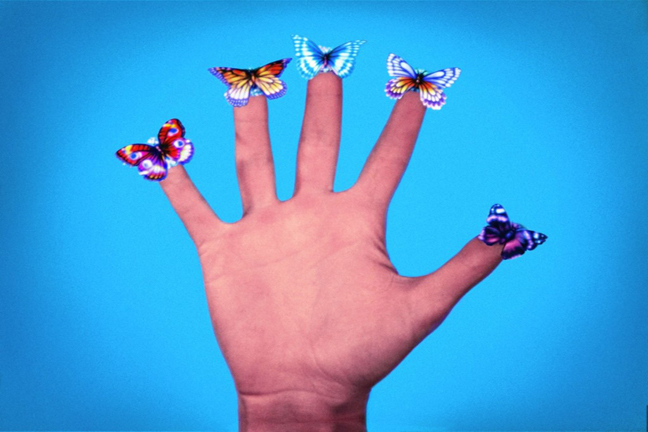
Jack Goldstein at The Jewish Museum
Organized by the Orange County Museum of Art and curated by guest curator Philipp Kaiser, Jack Goldstein’s retrospective celebrates the artist’s legacy of works filled with reflections on the subject finitude, start and finish, continuation and arbitrariness of reality.
Text by Alyona Coureau
Jack Goldstein x 10,000
Jack Goldstein’s elegant retrospective at the Jewish museum provides a well-balanced experience. It is aesthetic, intellectual, and emotional – all at once. This effect seems especially appropriate considering the artist’s words concerning the viewer as the prime subject of his work: “What interests me is that the space between your head and your heart, that is, your throat.” By stripping the images from their immediate meaning, he found a way to creep into the underlying systems of being, contemplation and comprehension, somewhere between personal and social. The exhibition reveals this prime quality of his work masterfully.
Curated by Philipp Kaiser with the help of Joanna Montoya, this is the first American museum retrospective of this influential artist. Mainly, it showcases Goldstein’s brilliant films and paintings, but includes his late linguistic and philosophic inquiries. On many levels, it speaks about memory, persistence, and imagination in relationship to facts evoking that state of mind when they are largely irrelevant. From the familiar short color films such as MGM (1975) and A Ballet Shoe (1975) to heavily textual pieces, the exhibition’s thoughtfully selected works avoid the downfalls of linearity. Abruptness and discontinuity are present as not only theoretical, but also as biographical topes.
A combination of sounds and images laid out in one of the museum’s intimate galleries tells a story of Goldstein’s thrilling artistic explorations. Starting from his early performance-based films made in the 1970s, the show demonstrates the transition he made from creating some sort of existential poems about death and randomness of events (as in the series Suite of 9 Records with Sound Effects, 1976 or many of his films) to monumental paintings filled contradictory sense of celebration and tragedy. (The stark 1979 paintings depicting lightning fields and bombing raids, despite the cold critical reception, are full of strange, elastic energy.)
Mostly discussed in the context of his inclusion in the formative 1977 exhibition “Pictures” at the Artists Space, curated by Douglas Crimp and Helene Winer, Goldstein’s work is usually viewed in a limiting frame of his interest in popular culture and appropriating images from mass media. The retrospective helps to dissolve this misconception by giving his work enough space and context to navigate the viewer out of the realm of the immediately accessible.
The well-curated galleries are spacious enough to invite ghosts of ideas and virtual flocks of text lines taken from post-structuralists’ manuscripts. Organized chronologically, the show guides the viewer from the early confident but gentle conceptual experiments to the risky combination of Minimal and Pop, both reserved and outspoken. Elusive work. Laconic expression. Airy effect.
“Jack Goldstein x 10,000” runs through September 29 2013 at the Jewish Museum, New York; thejewishmuseum.org.